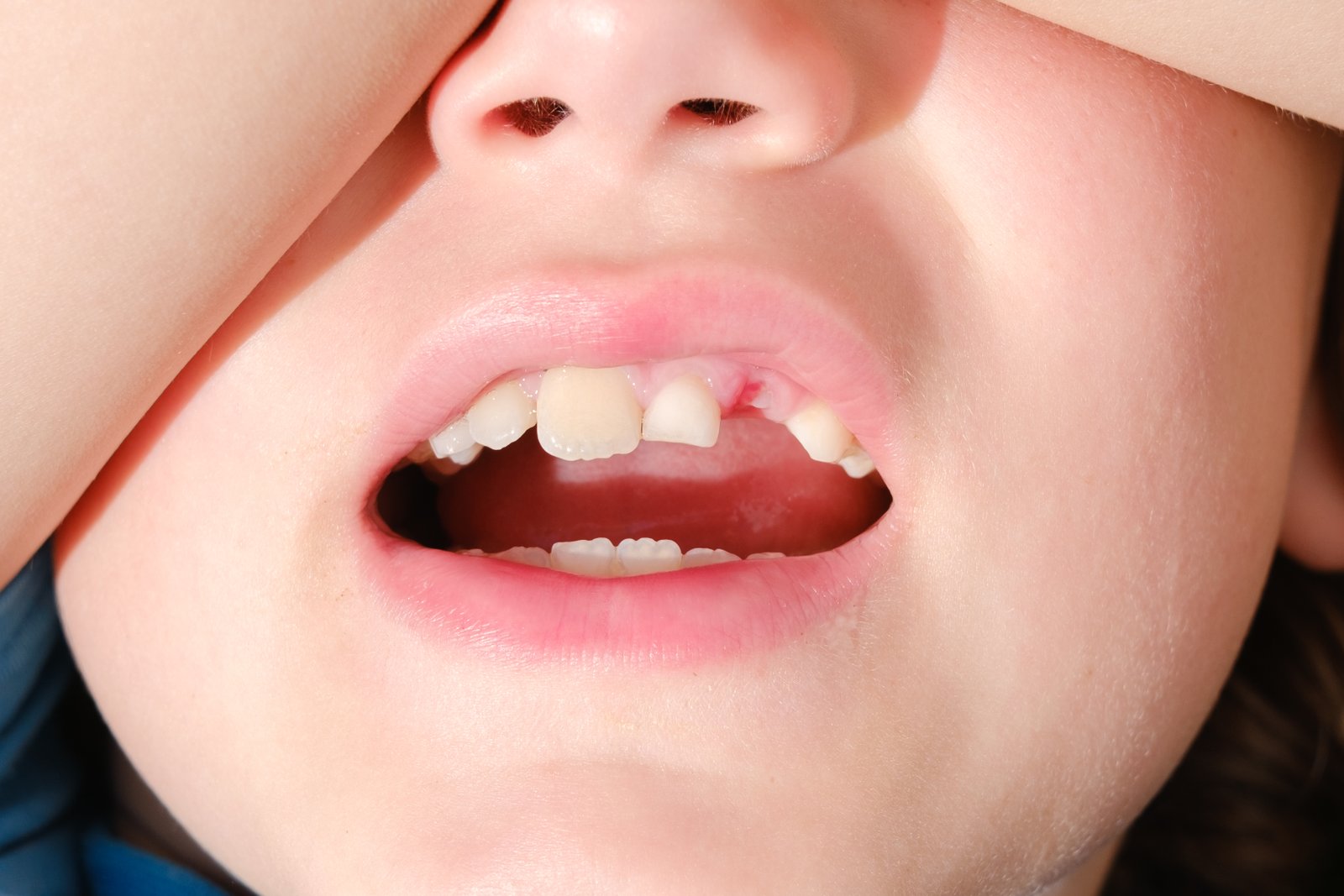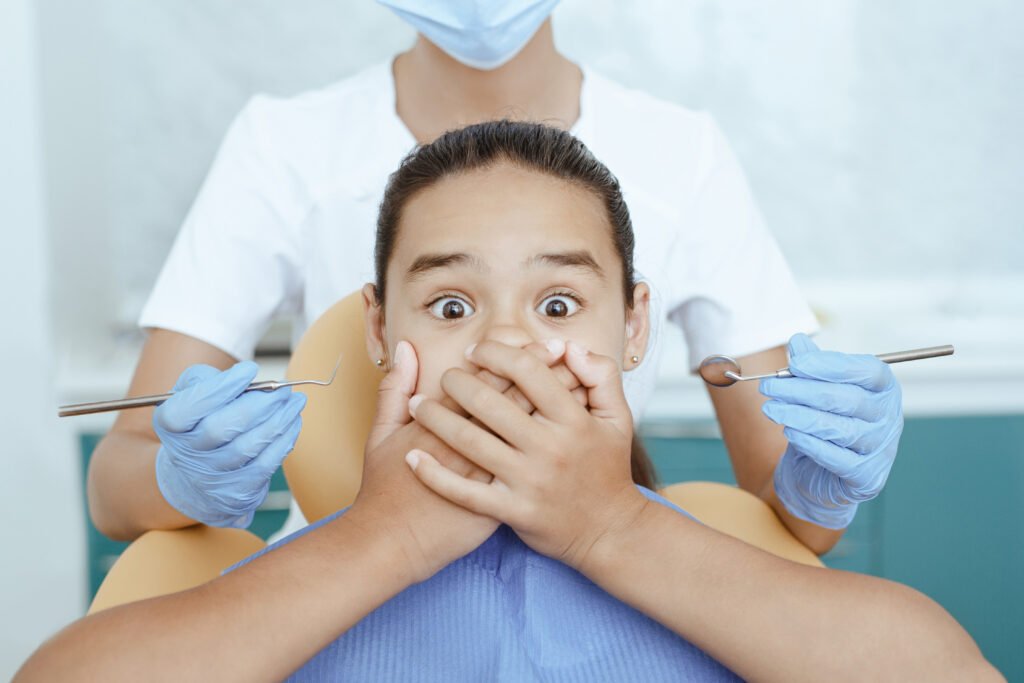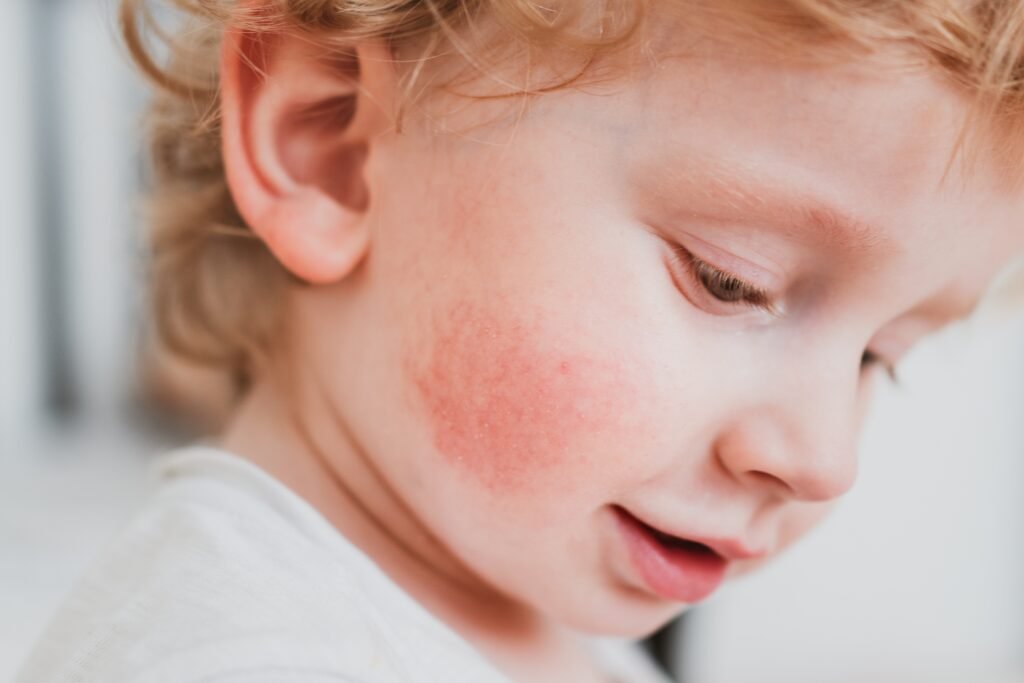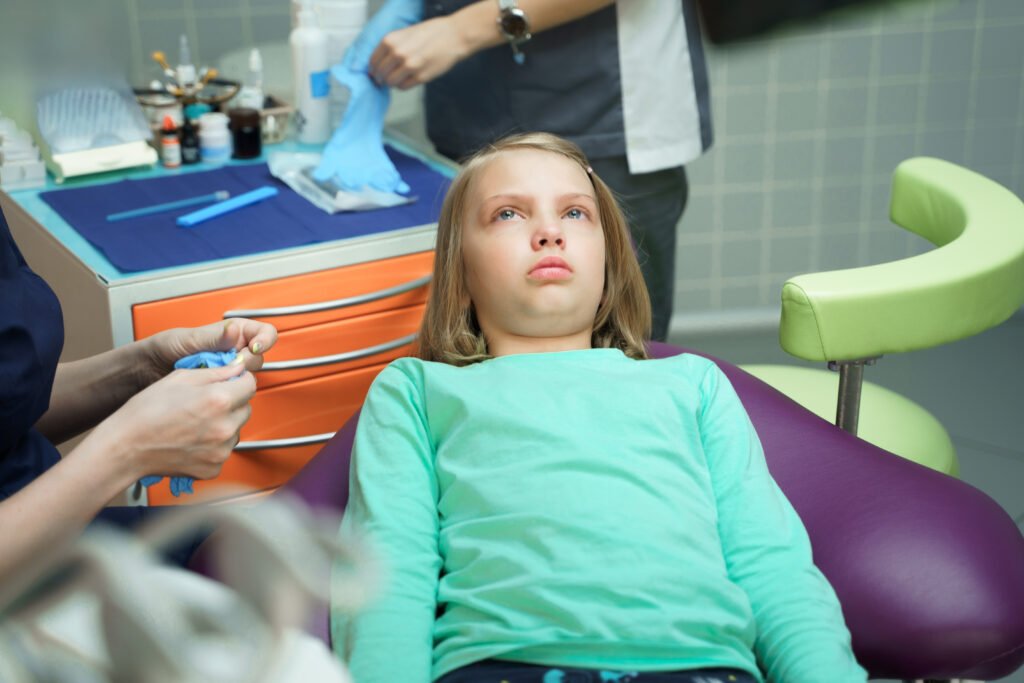How to Handle Common Pediatric Dental Emergencies at Home Before Seeing a Dentist
As chief pediatric dentist at Open Sesame Dentistry & Mother, I understand how stressful dental emergencies are, especially if they affect your child. You can manage some pediatric dental emergencies at home before visiting the dentist. By acting quickly and calmly, you can minimize pain and avoid complications.
Here’s a guide on how to handle some of the most common dental emergencies you may encounter with your child, along with some tips on what you can do before reaching the dentist.
Knocked Out Teeth (Avulsion)
A knocked out tooth (also known as an avulsion) can be alarming – especially if the tooth is permanent. With quick action, the tooth may be able to be re-implanted. Pick up the tooth by the crown, avoiding the roots. If it is dirty, rinse it gently with water. Do not scrub it or handle it excessively.
Place the tooth in its socket if possible and ask your child to bite gently on a piece of clean cloth or gauze. This will hold the tooth in place. If it’s not possible to re-insert the tooth, you can keep it moist in a glass of milk, saline or have your child place it between his cheek and gums. Contact your pediatric dentist as soon as possible. If the tooth can be re-implanted in 30 minutes or less, it has the best chance of survival.
What to do with a knocked-out tooth:
- Handle the tooth using the crown and not the root.
- Rinse with water, but do not scrub.
- If possible, try to put it back in the socket or store it with milk.
- Seek emergency dental care immediately.


Chipped or Broken Teeth
Chipped and broken teeth can occur during sports, play or accidents. If your child breaks or chips a tooth, clean the area and rinse with warm water to prevent infection. Store the fragment in a container that is clean and take it to your dentist if you can.
Apply a cold compress on the cheek or outside of the mouth near the damaged tooth to reduce swelling or pain. Do not let your child bite on the broken tooth as this can worsen the injury. Even though a chipped or cracked tooth may not cause pain, you should still have it examined by a dentist to avoid further damage.
How to handle chipped or broken teeth:
- Warm water can be used to rinse your child’s teeth.
- Apply a cool compress to the cheek.
- Bring any fragments of tooth to your dentist.
- Contact your pediatric dentist to schedule an urgent appointment.
Toothache
Toothaches range from mild discomfort up to severe, throbbing ache. Start by gently cleaning the area around the tooth that is causing your child pain with warm water. Check to see if there is any food or debris around the tooth. This could be the cause of the pain.
Apply a cold compress on the side of your child’s face where the pain is located if they are still in pain. This will help to reduce swelling and temporarily numb the affected area. Aspirin or heat should not be applied directly to the gum tissue. This can cause irritation. Ibuprofen and other over-the-counter medications can be used to manage pain. However, you should only take medication that is prescribed by your dentist. Call your dentist immediately for an assessment.
Tips for Toothache’s at Home
If you find food stuck, gently floss the area around the tooth.
For temporary relief, apply a cold compress to the outside of your cheek.
To reduce swelling and disinfect an area, have your child rinse the affected area with warm saltwater (a teaspoon of dissolved salt in 8 oz. of water)


Oral cuts and bleeding
Mouth injuries such as lacerations or cuts to the lips or tongue can cause a lot of blood, which is frightening for parents and children. First, calm your child down and apply firm but gentle pressure using a clean gauze or cloth to the affected area. Encourage your child’s head to be elevated, and use a cold compress on the outside of their mouth to reduce swelling.
It’s important to seek urgent dental care if bleeding continues for longer than 10 minutes, or the wound appears deep. To avoid further irritation, keep your child away from the area that is injured.
When to seek help for bleeding:
Applying pressure for 10 to 15 minutes with a gauze or a clean cloth DOES NOT STOP THE BLEEDING.
If the wound looks very deep.
- Cold compresses can help reduce swelling, If swelling is impairing breathing or excessive pain seek medical help quickly.
Dental Abscesses & Swelling
Swollen gums or a child’s face could indicate a dental infection. This is a localized infection at the tooth root. Abscesses can be serious and need immediate attention as the infection may spread to other areas of the body.
You can reduce the discomfort of your child by applying a cool compress to the area. Your dentist may recommend that you give your child pain medication. Do not drain the abscess, or administer antibiotics, without first consulting your dentist. Abscesses are a dental emergency requiring professional treatment to avoid serious complications.
Do Not Drain Abscesses at home by yourself as risk of further infection is high.

have a Dental Emergency? Get In touch with us fast!
As a pediatric dental professional, I urge all parents to prepare for dental emergencies. Keep a dental emergency kit with essential supplies at home, including gauze, a container to store a broken tooth and the contact information of your pediatrician. Home remedies may provide temporary relief but prompt professional treatment is necessary to avoid further damage and maintain your child’s dental health.
When in doubt, contact your pediatrician immediately. We are here to help you and your child through any situation.

